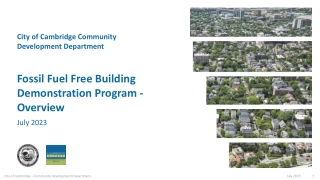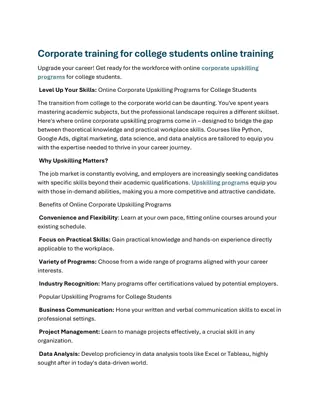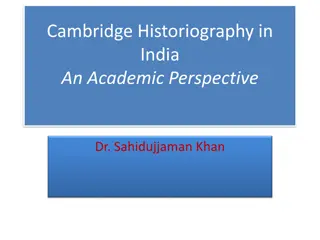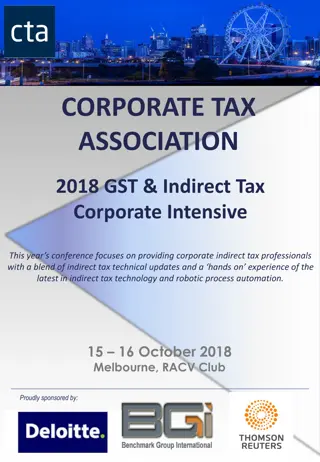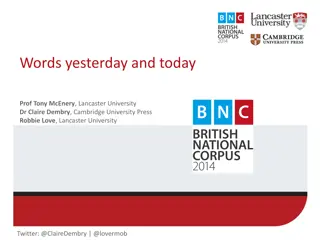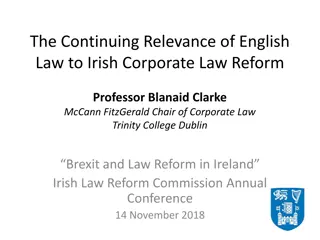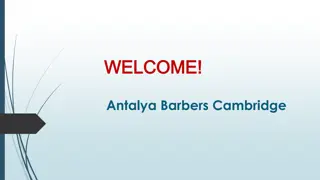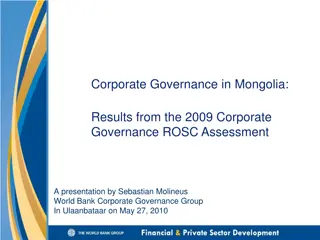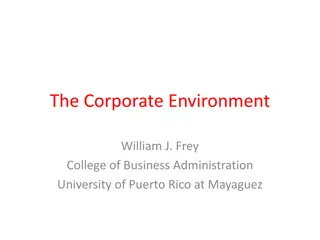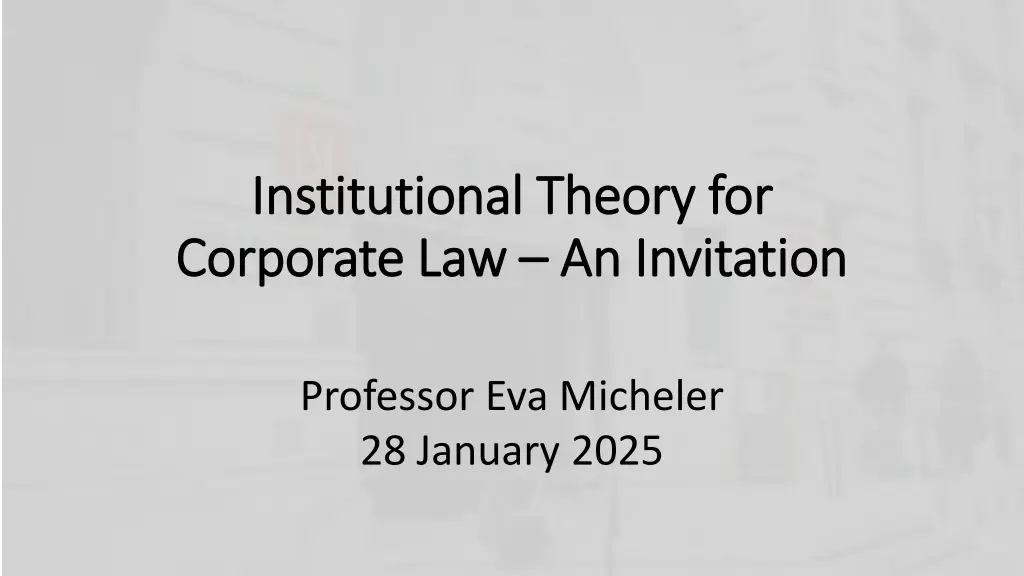
Introduction to Institutional Theory in Corporate Law
"Explore the concept of institutional theory in corporate law, focusing on the nexus of contract models and agency theory, the role of social environments, and the autonomous structure of organizations. Learn about the insights from scholars like Eva Micheler and David Gindis, and the interdisciplinary approach of blending legal analysis with social sciences in understanding institutional behavior."
Download Presentation

Please find below an Image/Link to download the presentation.
The content on the website is provided AS IS for your information and personal use only. It may not be sold, licensed, or shared on other websites without obtaining consent from the author. If you encounter any issues during the download, it is possible that the publisher has removed the file from their server.
You are allowed to download the files provided on this website for personal or commercial use, subject to the condition that they are used lawfully. All files are the property of their respective owners.
The content on the website is provided AS IS for your information and personal use only. It may not be sold, licensed, or shared on other websites without obtaining consent from the author.
E N D
Presentation Transcript
Institutional Theory for Institutional Theory for Corporate Law Corporate Law An Invitation An Invitation Professor Eva Micheler 28 January 2025
Preliminary Points Nexus of contract model and agency theory are dominant. All theories involve abstraction. Scholars deliberately isolate factors at the expense of ignoring others. Agency theory is useful as a basis for the analysis of conflicts of interest. But it directs attention away from company law. Focus only on board-level actors at the expense of lower-level managers and employees. Assumes rational action Ignores the behavioral effects of social environments. Blocks view of scholarship on organizations.
Eva Micheler, Company Law A Real Entity Theory (OUP 2021) Organisations are autonomous actors. They are more than the sum of the contributions by their participants. There exists an autonomous structure (a glue) in the form of procedures, processes and culture. NOTE: this is NOT anthropomorphic. The social structure that holds people together does NOT obey the laws of biological or any other science. Organisations are the formal and informal processes that shape the actions of their participants. These processes do not form an iron cage. There also exists human agency. The processes can, with time and effort, be modified by the participants. Law finds organisations. It formalises organisational action. Legal personality facilitates autonomous organisational action. Eva Micheler, Separate legal personality an explanation and a defence (2024) 24 JCLS301
David Gindis and Eva Micheler, Institutional Theory for Corporate Law An Invitation (2024) JCLS
We take inspiration from the New Private Law Literature which combines doctrinal legal analysis with scholarship from the wider social sciences. Institutional Theory Study of (social) rules and socially determined behavior. Political science distinguishes three broad types: A Brief Rational choice institutionalism (agency theory is part of this school of thought) Introduction Sociological institutionalism emphasizes social structure. Historical institutionalism: Humans are norm-abiding rule followers as well as self-interested actors.
Institutional Theory - A Brief Introduction Sociology and management studies: organizational institutionalism connections between individuals and group behaviour organizational structure (chain of command, assignment of roles and responsibilities) can be industry specific or relate to society at large identifies fields with their own institutional logic Legal Institutionalism primarily contributes to economics and finance rather than law stressing the importance of law as constituting the economy (Katharina Pistor).
Oliver E Williamson, Why Law, Economics and Organization? (2005) 1 Annual Review of Law and Social Science 369 Organizational theory Elinor Ostrom and the Bloomington School Interdisciplinary Law, Economics and Organization Empirical and field work Natural human actors who are embedded in a social environment. Framework for Institutional Analysis and Development Tool enabling connections between insights from different disciplines with different methodologies Imperial view (Posner) v What is going on here? (Williamson)
Hansmanns visualization of the nexus of contract model
META-CONSTITUTIONAL ACTION establishes the constitutional level. Outcome: the company is established as a separate legal person CONSTITUTIONAL ACTION governs the policy level. Example for an outcome: the general meeting appoints new directors POLICY ACTION governs the operational level. Examples for an outcome: a policy or instruction for the operational level OPERATIONAL ACTION directly affects the material and social environment, and its participants. Outcome: changes in the material or social world
Ostromian visualization of the company Action situations rather than focus only on actors Natural human actors Better integrates behavioral insights Including the problem of self-interest Dynamic (following decision-making, implementation, information gathering, organizational learning) rather than static No automatic execution of decisions No automatic movement of information about outcomes Distinguishes between companies of different sizes Integrates law as well as social norms Analyses company law together with employment law, securities regulation and other relevant sub- fields.
The company is neither public (a concession) nor private (a contract) but hybrid. Economic efficiency continues to be a normative goal. But avoids na ve policy making. What is going on here? Normative recommendations are developed against a methodologically grounded understanding of the institutional environment. Ostromian/organizational model of the company Neutral as to shareholder v stakeholder debate. Avoids the trap of thinking that there are easy answers.

